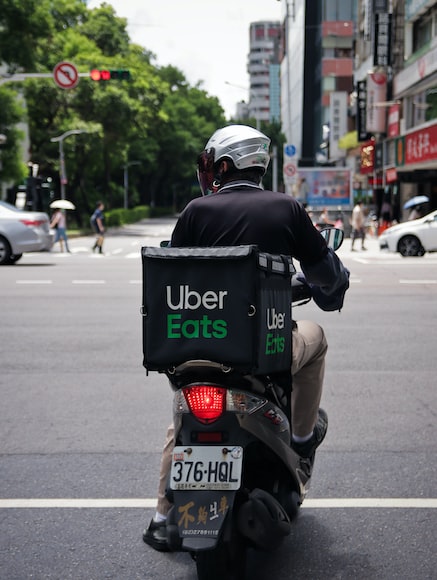
The rise of on-demand delivery apps has transformed the way people shop and receive their goods. With the ease of access and convenience, customers are opting for on-demand delivery services more than ever before. This has resulted in an upsurge of delivery apps such as Postmates, Uber Eats, DoorDash, and GrubHub, to name a few.
As the industry grows, new developments and trends are being introduced, changing the face of on-demand delivery services. In this article, we will explore some of the key trends and developments shaping the future of on-demand delivery apps.
Key trends in the on-demand delivery industry:
AI and ML to improve delivery routes:
As mentioned earlier, AI and ML can help improve the accuracy and efficiency of delivery routes. By analyzing data on traffic patterns, weather conditions, and other variables, these technologies can help drivers navigate the fastest and most efficient routes to deliver packages and meals.
AI and ML can also assist with predicting the demand for certain items or products, enabling the delivery companies to prepare and respond accordingly. This can lead to better inventory management and customer satisfaction.
Blockchain technology to enhance transparency and security:
The integration of blockchain technology can enhance transparency and security in the delivery process. By using a distributed ledger system, these apps can track packages and verify their authenticity, preventing fraud and ensuring that the right packages are delivered to the right recipients.
With blockchain technology, customers can track their packages at every stage of delivery, giving them peace of mind and improving their overall experience with the delivery service.
Autonomous delivery vehicles to revolutionize the industry:
The use of autonomous delivery vehicles such as drones and self-driving cars could potentially revolutionize the industry by making deliveries even faster and more efficient. With drones, for example, packages can be delivered to customers in areas that may be difficult or time-consuming to access.
However, there are still some challenges to overcome, such as ensuring the safety and reliability of these vehicles. Companies like Amazon and Uber are already experimenting with autonomous delivery vehicles, and it will be interesting to see how these developments shape the future of on-demand delivery apps.
User interface and user experience:
User interface (UI) and user experience (UX) are vital to the success of on-demand delivery apps. Customers expect apps to be easy to use and navigate, with clear information about delivery times and costs. They also expect prompt and reliable customer service if they have any issues with their delivery.
To meet these expectations, app developers must focus on creating intuitive and user-friendly interfaces, as well as providing excellent customer service through chatbots, email, or phone support. They must also constantly update and improve their apps to stay competitive and meet the evolving needs of their customers.
Factors to consider in developing an on-demand delivery app:
Deciding what type of delivery service to offer:
The first step in developing an on-demand delivery app is deciding what type of delivery service you want to offer. Whether it's food delivery, package delivery, or something else, it's essential to understand your target market and their specific needs.
Technology stack for app development:
Once you have decided on the type of delivery service to offer, you will need to consider the technology stack you'll use to develop the app. This includes programming languages, frameworks, and databases. You will also need to ensure that your app is compatible with both iOS and Android platforms to reach a wider audience.
Cost of development:
Developing an on-demand delivery app can be expensive, with estimates ranging from $20,000 to $100,000 or more, depending on the app's complexity and features. This includes the cost of hiring developers, designers, and other professionals, as well as the cost of servers and other infrastructure.
Developing an admin panel:
An admin panel is an essential part of any on-demand delivery app, as it allows you to manage and monitor the app's operations, including user accounts, deliveries, and payments. An admin panel also provides analytics and insights into your app's performance, enabling you to make data-driven decisions.
If you're developing an on-demand delivery app, you can consider developing an admin panel for $17,600-$25,700. This cost includes the development of the panel, including its design, functionality, and security features.
Conclusion
The future of on-demand delivery apps is bright, with new developments and trends transforming the industry. AI and ML can improve delivery routes and predict demand, blockchain technology can enhance transparency and security, and autonomous delivery vehicles can revolutionize the industry. App developers must focus on providing an intuitive and user-friendly interface, as well as excellent customer service, to meet the expectations of customers.
Developing an on-demand delivery app requires careful consideration of factors such as the type of delivery service to offer, the technology stack to use, and the cost of development. With the right approach and attention to detail, entrepreneurs and developers can tap into the potential of the on-demand delivery industry and provide customers with the convenience and satisfaction they expect.